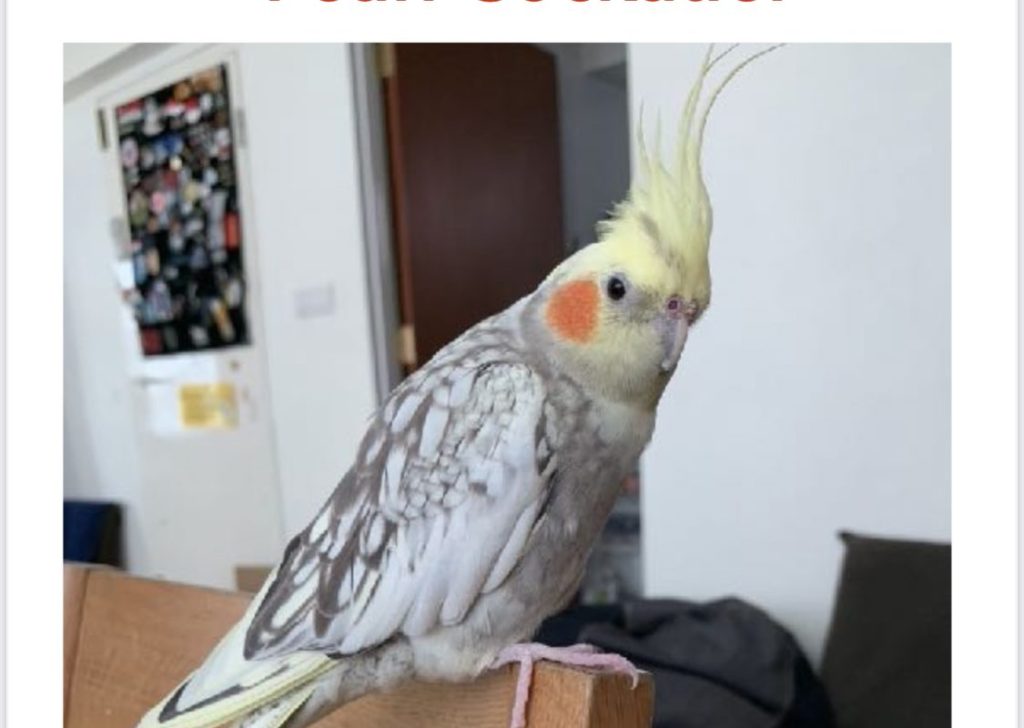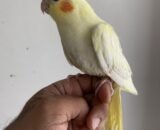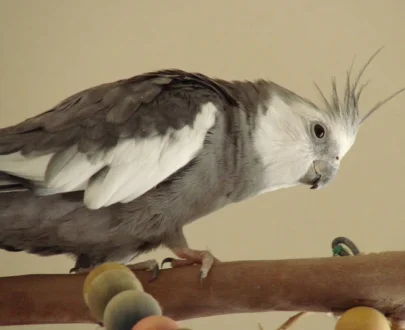- You have no items in your shopping cart
- Subtotal: $0.00
DESCRIPTION
Cockatiel Pearl are native to Australia, where they are found largely in arid or semi-arid country, but always close to water.
What do you expect from your Cockatiel? When you bring one home, you expect him to be a “cuddle bug,” possibly a talker, be intelligent, sociable, and give you unconditional love and companionship. This is what you want and this is what you can have, with exception of talking in females. Males are the ones that are trainable to talk. Rarely do females talk. You need to treat your Cockatiel the same when you first get him as you would a year from now. They are intelligent and can give you much pleasure and fun. They will love you like no other. Any family members, neighbors, and even strangers will be able to come over and pick up the sale parrot. You will want for the whole family to be able to pet the bird. They bond very strongly to their owner. In my experience, they can be great with many people. pearl-cockatiel, cockatiel pearl,
The Pearl Cockatiels are one of the mutations of cockatiel parrots. As one of the most popular pet birds on the market, these species have become common among breeders and rarely found in the wild. Loved for its different color varieties, this breed gets heavily bred by bird owners.
As a pet bird, the Pearl Cockatiel is becoming more popular as breeders develop colored species. The color mutation is sex-linked which determines the pearling the bird will have. Because of this genetic effect, most Pearl cockatiels are female, and just recently, breeders started replicating the same on males.
If you are looking for a pet bird, here’s all you need to know about the Pearl cockatiel.
Origin
These medium-sized birds are originally from Australia, where they are called quarrions and weiros. Initially discovered in 1770, they are the tiniest member of the cockatoo family. As they became pet birds, the Pearl cockatiels became a famous export from Australia to other parts of the world.
Over the years, the shipment of these bird species got banned. But with the rising demand by pet bird keepers, breeders now use the available birds to create new Pearl cockatiels. Therefore, it’s much easier to find it at your local pet store if you are looking for this breed.
The Pearl cockatiels are also known as Laced Cockatiels, Opaline Cockatiels, Pearl Tiels, Pearl Cockatiels, Pearly Cockatiels, or Pearly Tiels.
Physical Appearance

This colorful bird comes in multiple colors due to the mutation. The Pearl Cockatiel mutation first appeared in 1970. With the Lutino Cockatiel being the most popular mutation, there are several other variations that you can have in your home.
Pearling has to do with the feathers. For this breed, the feathers on the wings and back have a white or yellow lace.
The pearling differs and can be light or heavy. While the females don’t lose their markings, the male’s pearlings become very faint over time and only remain slightly visible among mature males.
The distinct difference between males and females is extensive. Apart from the intense coloring, females also have colored bars on the underside of their tail feathers. If you love colorful pets, this bird is a perfect choice.
Mutations and Colors
The grey colors are only for species in the wild. With constant breeding, there are now several different color patterns developed for domestication. Let’s take a closer look at these variations before you get one for your home.
• Grey
These birds have a gray body, white wing bars, yellowish face with a yellow crest on their heads in their natural wild look. However, the females and young cockatiels who haven’t gone through their first molt have orange cheek patches and grey faces with some yellowish infusion. White or yellow are the prominent colors on the tail feathers.
• Lutino Cockatiels
This mutation comes exhibits as a yellow-white bird that has orange cheek patches and red eyes. A distinct feature of this breed is the balding spot behind the crest. With the new birds, breeders are working to eliminate this patch.
• Pieds
For pieds, the grey colors of a cockatiel get replaced with white or shades of yellow. They are a desirable species for domestication due to their stunning color combination. Pieds can be either clear or Pearly.
• Cinnamon
Pearl Cockatiels with this color shade have grey feathers and some tones of browns and warm tans. A cinnamon brown color has replaced the dominant grey areas on the body.
• Albinos
Albinos form due to a lack of any color pigment, resulting in a white appearance. Unlike the other species, they don’t have an orange cheek patch or yellow pigmentation. The albinos also have stunning combinations among them, Pied Whiteface, Pearly Whiteface, and Cinnamon Pied Pearly.
• Silver
The silver color variation can display as recessive or dominant. For the dominant breeds, the bird will have warm grey feathers with brown or black eyes. With the recessive ones, they inherit light blue-gray feathers with red eyes.
Sexual Differences

Before you get a Pearl Cockatiel as a pet bird, you need to understand the differences between the two sexes. These distinctions determine their behaviors, appearance, and temperament.
The most distinct feature between the male and female is the pattern. Young males and females appear the same, making it hard for breeders or bird keepers to differentiate them visually. However, after the first molt, which happens after six months, the pearling pattern becomes more distinct because the males lose most of the coloration.
When identifying the sex of the bird, breeders also check the pelvic bones. For example, females have wider pelvic bones for the passing of eggs. Breeders require this information to help them during sexing.
Temperament and Behavior
As a popular pet bird, Pearl Cockatiels get the love for their docile personalities. Known for their friendliness, they are easily socialized and can fit in any home. In addition, they are exceptionally affectionate and will be happy to see you when you get home.
As a trainable breed, they are brilliant birds, Cockatiel Pearl, and often you will find them whistling. They can learn tricks such as mimicking some noises in your houses, such as the telephone, radio, alarm clocks, or phone ringtone. Males are better at the mimic game than females.
Despite being able to vocalize their emotions, they are much quieter than parrots. Therefore, if you need a calm pet bird, they are a good option. However, if you keep females, they are usually pretty quiet than their male counterparts and will likely hiss or bite you.
Because they are trainable, they can adopt bad habits such as nipping if they are not tamed. Also, if you scold them often, they will retreat and become shy around other people. They like company; therefore, their attention will be stolen from you if you keep them with other Cockatiel Pearl.
You can identify a male Cockatiel Pearl by how they strut around the cage. You will observe that these birds lift their wings slightly and stick their chest out as they strut.









Customer reviews
Reviews
There are no reviews yet.
Write a customer review